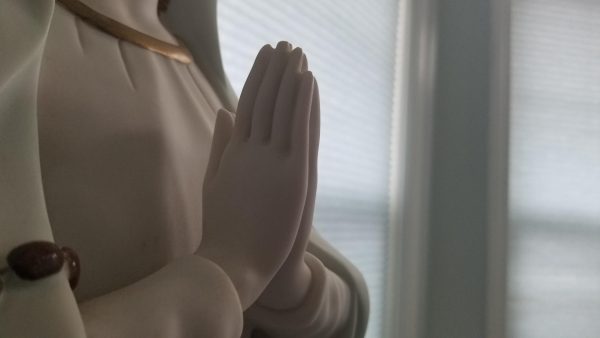Spring Break in Thailand teaches geography, culture
April 3, 2006
Under the glow of a tangerine sun, 11 Kent State students, faculty and staff trekked across the hills and rice fields of Thailand.
The group spent Spring Break in a two-credit-hour class on the other side of the world studying culture and geography through first-hand experiences with temples, palaces, hill tribes and elephants.
The special topics course, Geography of Thailand, was offered through the department of geography and was open to anyone at Kent State or in the community. This was the first year the course was offered, and during the eight-day trip, participants visited Bangkok, Chiang Mai and Chiang Rai, Thailand, and briefly visited areas of Burma and Laos.
James Tyner, associate professor of geography and director of the course, had been to Thailand before. He started planning the course last year while he was on the department’s trip to China. Tyner teaches a course on the geography of South and Southeast Asia, and he said Thailand epitomizes that area’s cultural heritage, which he hoped participants gathered from this trip.
“There is a lot to be learned in terms of the impact of globalization on indigenous people,” he said. “Looking at their plight over the decades, we see structural changes in their society. Villages have been relocated, and there have been interstate wars. There is a fight for personal survival as well as cultural survival.”
The group experienced the contrast between the developing capital city and the less tourist-oriented hill tribes of the north by visiting both areas through guided tours.
After about 35 hours of flying, the group started its tour and study in Bangkok. Thailand has a population of around 16 million people, and 11 million of those live in Bangkok. The city is full of bustling street life with venders selling various foods as well as crafts. Areas that are not paved are full of lush vegetation that abounds in the tropical climate.
The group visited the Grand Palace, experienced a traditional Thai dinner and dance, took a long-tail boat tour of the Chao Phaya river to visit the floating market, and some members chose to attend a drag show that plays a large part in the country’s culture. Visits to night markets, temples and jewelry and silk stores offered participants the opportunity to discover the city on their own as well.
Tyner said he might skip visiting Bangkok if the course is offered again next year because he would prefer the group to explore the areas in Northeast Thailand, which are more remote.
“Those areas are off the beaten path, and it would be nice to really explore the relationship between Thailand and Laos,” he said. “It was a remarkable opportunity to go into Burma and Laos on this trip because most people do not get to do that.”
The group flew to Chiang Rai and then bused to Chiang Mai, which are close to the northern border, in order to see some of the older and less-frequented aspects of the country.
Chiang Rai is a small town with streets lined in pineapple stands and flowers. The group visited the Royal Garden, the Karen Longneck Village where women wear copper bands around their necks, a 600-year-old brick temple constructed to honor Buddha and toured an opium museum and the Mae Khong River where illegal drug trade took place during the 1960s. During the riverboat tour, the boat docked, and the group entered Laos for an hour to explore and shop.
The group’s final stop was to Chiang Mai. One day was spent visiting hill tribes, the Wat Phrathat Doi Suthep Temple and the giant expanses of night markets where individuals can barter for goods such as teak art, silk and bamboo products. The last day of the trip, the group visited an orchid farm, an elephant training center where they took a 35-minute ride on elephants through the forest, and large emporiums of silver, bronze, lacquer and wooden umbrellas where workers demonstrated how the products were made and then offered them for sale.
During a brief trip across the border to Burma, the group took tuk-tuks, which are three-wheeled taxis, around to see the different kinds of temples and architecture of that country.
Tyner said in order for students to earn the credit for the course they will most likely write a term paper. In the future, he would like to work the trip into his South and Southeast Asia course, but he doesn’t want that to deter others from going on the trip if they can’t take the semester-long class.
Andrew Zink, senior archaeology major, found out about the trip because he went on the China trip offered through the department last year. He said he is also planning to go on the department’s trip to Japan at the end of spring semester because the trips through the university and department are so well priced.
“For $1,500 – when are you going to go to a country for that?” he said. “We were staying at four- and five-star hotels, getting three meals a day, being shown around by the tour guides and seeing interesting places. You can’t get all of that for that price anywhere else.”
Contact College of Arts and Sciences reporter Heather Bing at [email protected].
























